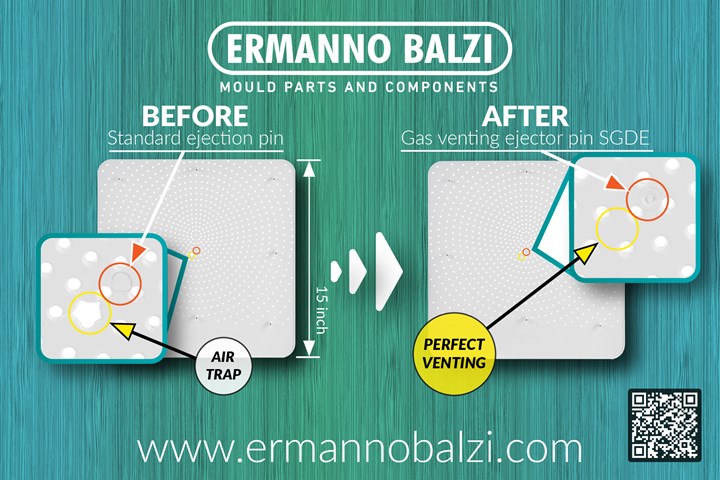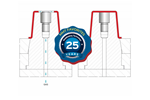Dynamic Internal Valves Overcome Standard Mold Venting Limitations
The Ermanno Balzi Internal Dynamic Valves SGD and ejectors SGDE showcase a larger venting surface and punctual positioning of the valve for better quality parts.

Photo Credit: Ermanno Balzi
To help resolve common effects that result from poor cavity venting, Ermanno Balzi showcases its Internal Dynamic Valves SGD and ejectors SGDE, which, due to a larger venting surface and punctual positioning of the valve, are said to overcome most performance limitations common to standard venting options. In addition to achieving better quality parts and reducing scrap during production, the company says its dynamic valves also enable reduction of injection pressure and injection time.
The mold component can be placed inside the cavity of the mold and allows gas to escape from a venting hole that automatically closes under the pressure of the injected plastic. Air and gases can flow through the central hole and along the wide internal venting channel. When the injected plastic arrives at the valve, it applies pressure on the shaft surface, compressing a spring and closing the valve. While in closed position, the central pin seals off the venting hole, ensuring that the plastic does not fill the valve.
According to the company, its SGD component is particularly efficient at solving the air-trap problem because it can be placed closer to the area where those traps occur, releasing the air before it gets trapped from the plastic flows. After applying SGD, Ermanno Balzi customers were reportedly able to achieve full shot and improve the part’s general appearance (visible in the image).
Related Content
-
How to Solve Core Pull Flash and Part Issues
Many mold problems can be solved by simply providing enough preload force on the core to prevent movement.
-
Why Shoulder Bolts Are Too Important to Ignore (Part 1)
These humble but essential fasteners used in injection molds are known by various names and used for a number of purposes.
-
Strategic Mold Venting – Placement and Method
Knowing where and how to vent a mold is critical for difficult areas and complex geometries.











